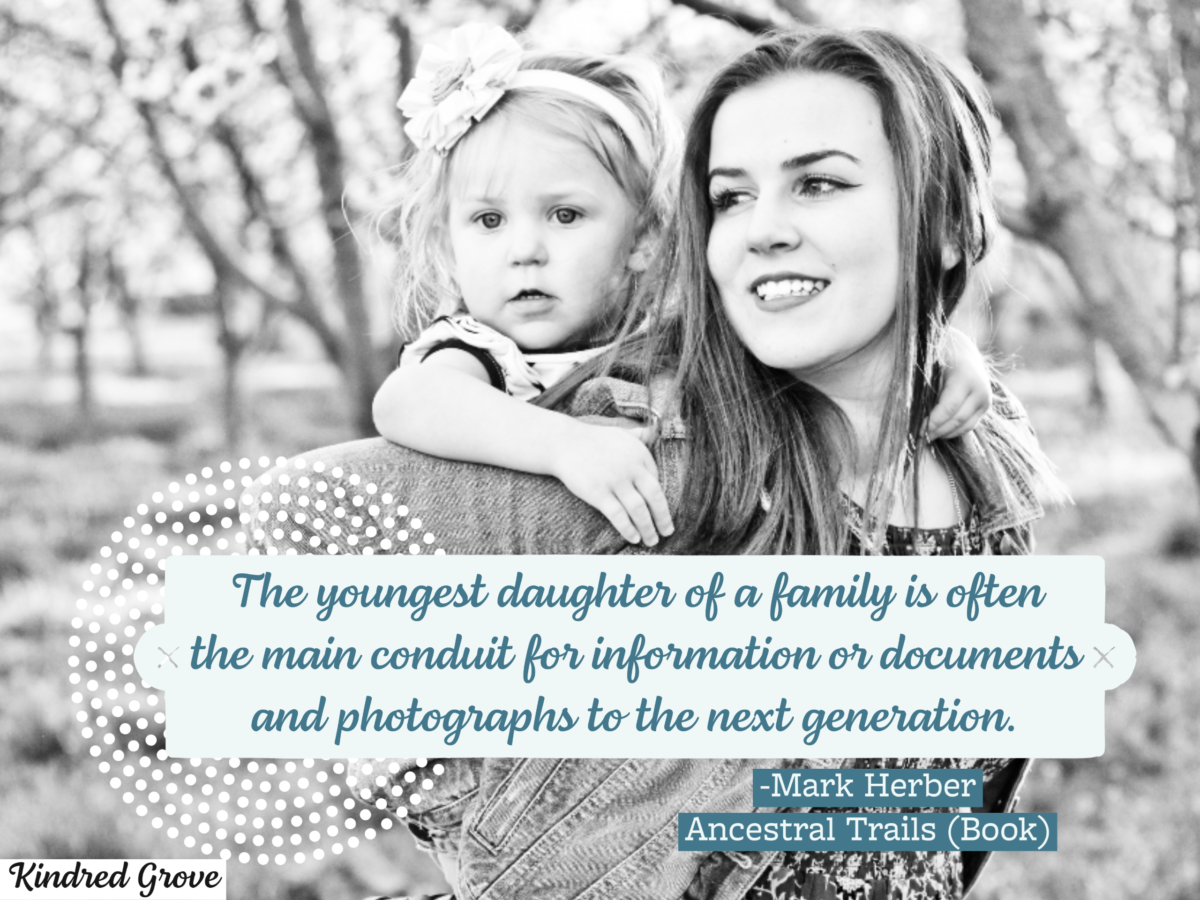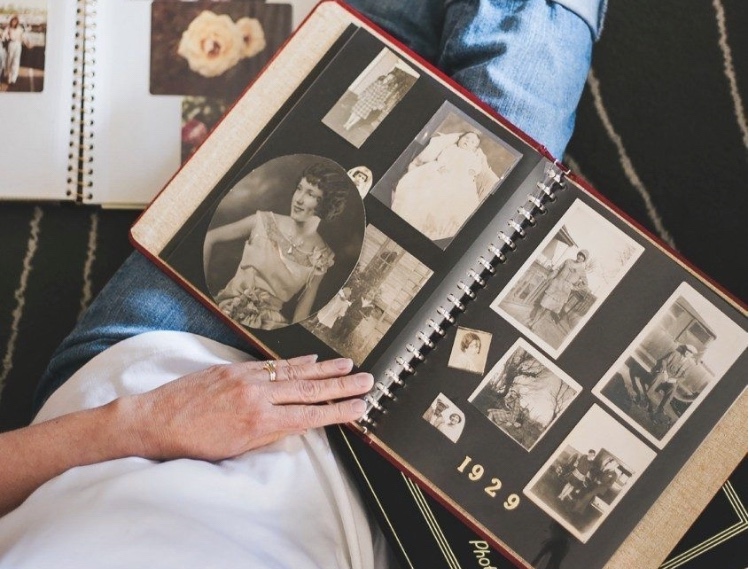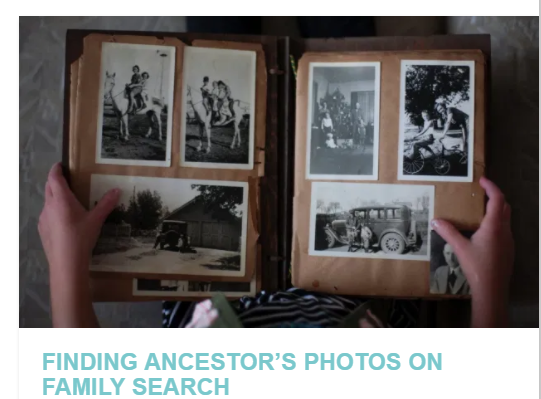Searching for Old Family Photos
Not too long ago, I did not have a SINGLE PHOTO of an ancestor. When I began doing family history research, I was thrilled to find a handful on Ancestry.com. However, I learned that if I wanted to access more of my ancestors’ photos, then I needed to make some actual connections with distant family members. I didn’t want to wait years for the possibility that someone might upload them to family history sites when I knew there were photos out there on shelves and in attics of distant cousins.
It might seem intimidating, but before you discount this idea, I recommend that you at least read through these ideas and consider them. What has taken a small investment of my time has returned with priceless family treasures! It is so worth it and I am here to walk you through it, step-by-step!
Through experience, I have learned what does and doesn’t work when it comes to reaching out to long-lost cousins and have compiled all these tools into a list for you. I have used this process many times and am so excited to share it so others can have success at finding old family photos and can experience the joy and excitement I have.
Here is the method I use when requesting my ancestor’s photos from distant relatives:
STEP-BY-STEP GUIDE TO FINDING ANCESTOR’S PHOTOS
- Choose one family line- or ONE ANCESTOR, whom you’d like to learn about more.
- Create a family tree for that line and work on finding their descendants, rather than their ancestors. This is called descendancy research, rather that ancestral research.
- Start with the ancestor you want to find photos of and after adding their information- such as dates and locations, add all of their spouses and children. Then fill in the next generation(s).
- The goal here is to make your way down until you Find Living Relatives! Ask your close living relatives (parents, grandparents, aunts & uncles, etc.) about any extended family members they know. Write down any names and other information they may have-such as location, occupations,etc.
- Use hints on your family tree to fill in additional family information.
- Look for obituaries for the family. Obituaries often give names and locations of the living family members.
- Use Google, Facebook, and people finder sites to locate even just one or two living relatives. You can start there and see where it leads. Keep notes of what you have found and what is missing.
- As you research all the children of your ancestor, don’t forget to include their spouses and children. Then find the last known locations where they lived. Add all of this information to your family tree or to a document. Online trees will keep information private for all living people, so just make sure they are marked as LIVING in your family tree. I also love using GOOGLE DOCS for notes and memories, etc. It’s free, it automatically saves all of your work, and you can use the app on your smartphone when you are away from the computer. All you need is a gmail account to also access Google Docs for free. LINK HERE
- Once you locate living relatives, you will need to choose who to reach out to first and then write letters, Facebook messages, and/ or make phone calls explaining who you are. It is essential to give your relationship- how you are related to your ancestor and them. Explain that you have been researching your ancestor and want to connect to the other family members. Be specific with the necessary details. I usually start by contacting one person and go on to the next one if needed. There’s usually no need to write everyone unless you have an urgent request. I usually gain some information as to how to proceed from the first or second contact, so that is why I don’t typically send out more than one letter at a time. However, it is up to you.
Here is something to keep in mind when trying to decide who to reach out to first in a family for memorabilia. Start with the youngest daughter and her children. She was probably the last child living in the home with her parents and is often a caregiver for parents in their latter years- therefore, she typically inherits the family photos and such.

How Should You Introduce Yourself?
Here is one example of what you could say, “Hi there. My name is Melissa. My mother’s name is Sallie Rogers, and she was the daughter of Ben Rogers from South Carolina. I am looking for a distant cousin named Tom Harrison. Do I have the right person?”
If they say you have the right person, you could proceed by saying, “Yes? Oh great! I believe your grandmother may have been my grandfather’s sister. I’ve been researching our family and looking for some of my relatives and came across your name. Was your grandmother Frances Rogers from South Carolina?”
Lead into the rest of the conversation from there.
- When reaching out via phone call, do not immediately ask for photos or anything other than making sure you have the right person. Wait for a response before you proceed.
- If you’re sending a letter or email, attach a photo of yourself or your family. Tell them a little bit about yourself. Be transparent about who you are. It will help to build that trust quickly. Some people are very wary of being scammed and for a good reason!! Some people can form a connection quickly over the phone by hearing your voice and intent, but that can be harder in a letter. So you’ll want to include something that helps them to trust you.
- Ask them about their branch of the family (but don’t ask anything too personal) and try and make a connection! Build on something! Be sincere. Please don’t be fake. These are your relatives! You could ask them if they keep in touch with other cousins, ever visited Grandma’s home etc.
- If this person is a “sharer”, please listen to what they have to say. Especially if it is an older person, you may be the first phone call they’ve had all week. Remember that the older they are, the more information they may have to into the family history. They deserve to be cherished as if they were a sea of family knowledge- because they probably are. Take notes!
- Share a little bit about your journey, but keep it brief. Your distant relatives don’t need to know how many hours you have spent researching this ancestor and every frustration you’ve encountered. Just explain why you are researching this ancestor and what they mean to you.
How to Ask For Ancestors’ Photos
- After properly introducing yourself, ask very politely if they had any photos (or stories or other memorabilia) they would be willing to share. Briefly reiterate why it is so meaningful to you. Try and spark an emotional response. This is what causes people to take action! It doesn’t require you to share your whole life story or give a sob story, but you will want to share a reason of WHY you want them. Open up a little bit. Formulate a genuine reason that you’re comfortable sharing. Be sincere and truthful.
Examples of How to Ask for Photos
“I would like to learn more about Grandma Rogers and her life. I’ve never seen a photo of her, and it would mean the world to me to see what she looked like.”
I typically think it is best to be positive with a stranger, but if you have a brief personal story that is a little tender and you feel inclined to share, go with your gut.
For example, “My mom’s family moved when she was very young, and she missed her grandmother very much. She never had a photo of her grandmother- only memories in her heart. I would love to find a photo of her grandmother as a surprise. It would be the greatest gift to give my mother!”
How would you respond if someone asked you like that verses just saying, “Can you send me copies of any photos you have of the family?”
- If they say they do not have any photos of your ancestors, ask if they have any memories, traditions, or stories that were passed down. And also, ask if they know anyone else you could ask. If you talk to one person who had 5 siblings, ask them who is still living and might have any information. You could also ask if they would be willing to give you the best contact information for that person. They could save you a lot of time!
Feel out the situation. Don’t be a nuisance if someone doesn’t sound interested in talking to you. But if they are receptive and friendly, be ready to ask a few more questions to help with your next step (within reason- no interrogations) so you don’t have to keep calling them back. No one likes a stalker.
TIP:
Also, remember that sometimes a widow may have photos for her husband’s family. Just because your male cousin may be deceased, does not mean that he shouldn’t be considered. Include the spouses of family members as much as you consider the blood relatives themselves!
- If your relative says that they have some photos they could share, show your excitement, and then offer a way to make it easier for them to get them to you. Offer to pay for the scans and/ or copies and offer to pay for someone to do the scanning for them (like a copy center, etc.). Many people are overwhelmed by the process of scanning photos- especially if there are many or if the person is not technologically savvy. Showing that you are willing to help makes people more inclined to help you because it makes their part easier and they can see how much it means to you!!!
Depending on how many photos they have will probably determine whether the scans should be emailed, printed, or put on a flash drive and mailed, etc. You can discuss these options once they tell you what they have in their possession.
Another piece of advice I would offer is to go along with whatever process they are most comfortable with! For instance, after you make some suggestions, if they suggest something different, JUST GO WITH IT! For example, if it is easier for them to makes copies at Walmart and mail them, gladly accept! Even if that isn’t one of your suggested ideas and if it costs you more money than having them scanned and emailed, remember that uploading and emailing photos may be a daunting task for many people and they may feel overwhelmed at your request.
I like to tell my relatives, “I am fine with whatever is easiest for you! Just let me know how you would like me to help and pay you for them.”
If you push them to send them in a way that is unfamiliar and intimidating, then you may never see those photos. A well-meaning person may write you off if you ask something that seems too difficult to them. Even if you think you are suggesting a plan that is really easy, if it is foreign to them, they may think it sounds hard. Remember that the goal is to acquire family photos. If you let them help choose a method that they can accomplish easily and fits well into their comfort zone, you are much more likely to receive the photos!
**As a side note, although I have offered to pay for photos/scans every time, I have never actually had someone let me pay them. I offered this with an absolute intention to pay but the relatives I contacted ended up scanning and emailing or taking a picture with their phone and texting. (Which by the way, that isn’t a *perfect solution, but beggars can’t be choosers right?) If you really want those photos, be willing to either pay or settle a little bit. I am grateful for all the photos I have received- regardless of the method. It’s important to recognize that they will be such a joy to you even if they aren’t perfect scans! Be willing to let go of expectations of perfection.
- Always offer to SHARE anything you may have with your newfound cousins! Documents, information, your own family stories and traditions, and family trees, etc. are great things to offer! If they aren’t interested, don’t push it, but at least offer to reciprocate in some way!
- Give them your contact information (preferably more than one method) to get back in touch with you. Or ask them if you can call them back again sometime. (Not too soon).
- Express Sincere Gratitude for their willingness to talk to you and consider your request!
- Send a thank you card, stay in touch, become friends on Facebook if you feel they are interested in having further contact. Don’t force it but do INVITE.
- After you have completed the process, REPEAT it for another ancestor.
Successful Interactions
This process wasn’t very comfortable for me in the beginning, to ask strangers (even related strangers) for a favor. Still, I have found the overall response has not only been positive but also very rewarding! Not only have many cousins shared some pictures with me, but they also have kept in touch and been interested and excited to learn about other members of the family. I have been humbled and surprised at the generosity of others who are willing to help.
This certainly isn’t always the case, and there are many reasons some people do not join in your quest such as illness, difficult life circumstances, busy workloads, etc. so try not to judge if someone is a little gruff. You probably won’t understand what is causing their resistance. In that case, just apologize, thank them for their time and wish them well. You never know what they might think or decide to do after you have hung up the phone. They may choose to call you back the next day if you were polite and respectful. So don’t burn any bridges.
I find that more often than not; extended cousins are happy to help or direct you to someone else. Hopefully, like me, you will be able to look back in a short time and realize how much you have gained in family memories and memorabilia if you will take the time to go after them!
Have you had any luck obtaining your ancestor’s photos using this method or anything similar?
I will send a prize to the first person who tries this method and leaves a detailed review or comment! Please share your wisdom or experience in the comments below! 🙂
Family Search is a free site that has many photos that have been added by contributors. Click the link below for a tutorial on accessing what is available there.
Melissa Knapp
Latest posts by Melissa Knapp (see all)
- How to Find Death Information Before Vital Records Were Created - December 17, 2022
- Is Your Ancestor Hiding in a Census for the Deceased? - January 24, 2021
- How to Add an Unattached Person to the FamilySearch Family Tree - September 6, 2020



Wow! I’ve never heard of finding photos of ancestors from this type of approach but it makes so much sense. There are so many photos sitting in family members closets and shelves. This has opened my eyes to the possibility of finding some memories which I have feared may never be available to me. Thank you!
I have been researching for some information for like this for some time and this helped a answer a lot of my questions. Thank you! Please share more on this topic. I like your style and understanding!
Hello, Melissa, I’m Barbara, one of the co-founders at Ponga. I’ve been following you for a while on Instagram and your post today about the Murder Mystery party had me smitten (https://www.instagram.com/p/Cj_Lu3HJpMT/). It sent me down the rabbit hole to explore your site, blog, and now this post. As I think you know, we’re all about photos creating better ways for families to share the so-important stories of family history through the artifacts passed down through generations. You’ve captured here many of the key best practices we talk about —and actually many more I’d not even thought of.